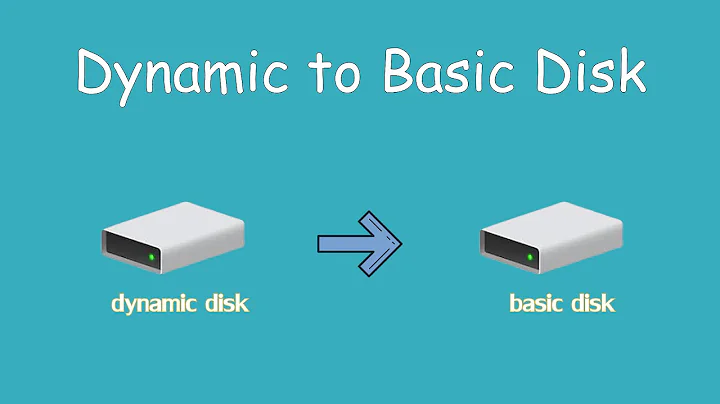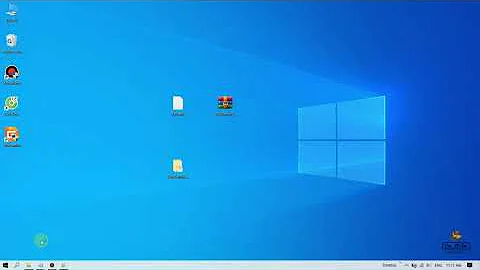Why do I need to reactivate my dynamic disk after a reboot?
I had the same issues with a Buffalo Terastation III 4GB iSCSI SAN device connected to MS Windows Server 2003.
THE PROBLEM
After a reboot, the operating system will not reactivate the dynamic disks associated with the iSCSI device. And any network shares associated with the dynamic disk would be lost (unshared). iSCSI initiator shows the device connected okay. The dynamic disk would need to be activated manually in Disk Manager. Then I would have to reshare the folders I wanted shared, and set the share permissions.
Dynamic disks have certain advantages on paper that make them see like a good choice, but Microsoft pulled another undocumented fubar here with the iSCSI devices. They have reportedly fixed it in newer MS operating systems, but of course have no pressing motivation to go back and patch it in the Windows Server 2003 OS.
This failure to reactivate has something to do with the timing and order of operations during the boot processes. Disk Management loads either too soon or too late for the dynamic disk to be activated automatically at startup.
THE SOLUTION
I discovered a scripted solution to reactivate the affect dynamic disk at startup without user intervention using a bat file and setting startup options in Windows 2003 Server Group Policy.
Reactivating iSCSI dynamic disks and setting Group Policy to run the batch script. The instructions for how to create the files "Connect_SAN.bat" and "Connect_SAN.txt", then configure Group Policy to run them at startup can be found here:
http://bitbud.com/2009/01/23/microsoft-dynamic-disks-cause-iscsi-issues-on-reboot/
Note: It should be obvious to many Administrators, but just in case... You will need to ignore the dashes Htike Win puts in front of the commands. He uses them like bullet characters, but they should not be included in the batch file and text file you will create.
Also, the quotes characters shown on his web page are smart quotes, which are not recognized by Windows commands. You need to retype those as simple quotes in the batch script. Just retype the "quote" characters on the keyboard and you will be fine.
Optional - Finally, I added an extra line to the Connect_SAN.bat file I added "net time >>c:\Connect_SAN.log" to the batch file as a second line. That runs after the diskpart command completes and then provides a simple text log of the reboot times. It is a redundancy that I build into some of my batch scripts when I want to be able to double check if they are running regularly.
RESHARING NETWORK SHARES
Next, if you have network shares that you set up with that iSCSI drive, you will want another script using net share commands to reshare the resource and set permissions. You will need this to run AFTER the dynamic disk is reactivated.
I set up an other batch script "Connect_SAN_shares.bat" Each line of that bat file is a command to reshare a particular subfolder. I set that shares bat file to run in Group Policy after the Connect_SAN.bat finishes.
If you are not familiar with the command, run "net share ?" at a command line to see the options. You will need to at least assign a share name, then set permissions for Everyone to FULL. You can tweak those share permissions to suit yourself, but be cautious about restricting permissions or you may lock yourself out.
A PERMANENT SOLUTION? Finally, I have seen references to solving this permanently by converting the Dynamic disks to Basic disks, but I will not do that until I have confirmed with the SAN manufacturer that it will work fine.
The word on the street is once Dynamic disks are converted to Basic, they reconnect fine after a reboot, and the network shares also do not get dropped. Something to keep in mind when setting up new devices in the future.
That is my next step if and when the BuffaloTech support people respond to my inquiries.
Once I get some assurance that it is safe to convert the iSCSI disk to Basic mode, I will arrange a time to perform a full back up on all that data when I know it will be static for a a few hours, then perform the disc conversion. It is reported to be a fairly quick process.
Related videos on Youtube
Saariko
Updated on September 18, 2022Comments
-
Saariko over 1 year
I have added a dynamic disk to a W2K3 machine.
It is correctly connected and displayed in the iScsi Initiator and correctly binded. However, I need to reactivate it in the Manage disks console after every boot.
Is that a known bug?
How can I have it Reactivated automatically please.
-
 Ƭᴇcʜιᴇ007 over 12 yearsCan we get some more specs on the setup? Like why are you using an iSCSI Initiator?
Ƭᴇcʜιᴇ007 over 12 yearsCan we get some more specs on the setup? Like why are you using an iSCSI Initiator?
-
-
Saariko about 12 yearsThanks Joseph, you have explained in detail the entire process. I also recreated a basic disk for the shares to reconnect.




